- Home
- Tom Clancy
Shadow Warriors: Inside the Special Forces Page 12
Shadow Warriors: Inside the Special Forces Read online
Page 12
This meant that if American Special Forces were going to do any good at all in a counterinsurgency situation, they would have to be able to walk a very thin and risky line. They would have to act toward the local government with great care and finesse, based on the direction they’d been given by their own commanders and government, while developing more than a skin-deep rapport with the native peoples.
In view of this very sensitive psychological and political environment, it became evident to Bill Yarborough that the criteria for Special Forces would have to include far more than just expertise in guerrilla warfare. Personal character became extremely important—the judgment, maturity, self-discipline, and ability to work harmoniously with people who were culturally very different from Americans.
What kind of soldier operates effectively in such an environment?
First of all—and this is as true now as it was in 1961—it is one who thinks in ways that conventional soldiers are not expected to. Like all soldiers, Special Forces men work under a chain of command, but unlike the others, they may not always have direct or even regular communication with their superiors. That means that at times they need to act on their own, which means they inevitably make decisions on their own—though based, it is hoped, on a clear understanding of their commanders’ and their nation’s intent. At times these decisions have an impact far greater than those that more conventional soldiers may be called on to make. They may not only radically change lives or lead to deaths, they may also affect policy decisions going all the way up the chain of command to the President.
At the same time, tough problems come up that only Special Forces soldiers can solve. Many of these problems are practical—a Special Forces soldier might be required to deliver babies, extract teeth, or design a bridge and supervise its construction. Others are psychological—Special Forces soldiers may well need to persuade, cajole, or manipulate a not-very-friendly local leader to work for goals that may be in the United States’ interest but not obviously in his. Either way, the problems are typically unexpected, complex, and open-ended, and there is no guarantee of help from above.
In addition, Special Forces soldiers cannot focus their individual tactics, techniques, capabilities, and thinking on a few specifics. They can’t simply rely on well-honed soldier skills. They are taught, and arc expected to think, in the broadest terms. When they work a problem, they are not merely trying to solve it in the best way for their team but in the best way for the United States. They need to be able to see and handle such problems in all their complexity.
Soldiers are called “special” in part because they can be trusted to make such decisions.
EMPOWERED though he was by the President to make those soldiers, Bill Yarborough had a big job ahead of him. He had to take the “old” Special Forces and turn it into the “new” Special Forces—and not all of the “old” wanted to become “new.” He had to grow the small and marginal outfit into a force of significant size with greatly increased output, yet bring into the force the very best recruits. This meant “raiding” the rest of the Army for people nobody in the rest of the Army was willing to give up (he was empowered to do so, but at the cost of much resentment). He had to weed out those who did not make the mark, while educating and training to the very highest standards the picked and tested men who remained, and then he had to fill these men, individually and collectively, with pride and self-esteem. Meanwhile, he had to study the nature of the enemy and the ways others had learned to combat such an enemy; he had to do it to a depth rarely—if ever—accomplished by a military organization; and he had to find ways to make his Special Forces not just learn these insights, but incorporate them into their blood and sinews. And finally, he had to continue to sell his always fragile and vulnerable Special Forces to the “big” Army and to the American people.
A NEW KIND OF FIGHTING FORCE
Bill Yarborough faced a big job, but first he had to clean house—which involved raising the bar.
Not long after he took over Special Forces in 1961, Yarborough came to realize that a significant portion of the SF old-timers did not measure up to the standards his new fighting force required. These old guys were a rough lot—fire-breathers and flame-spouters. They were extraordinary soldiers, but not all of them could be counted on to operate well in politically and psychologically sensitive situations.
“The ones 1 was especially anxious not to retain in the Green Berets,” Yarborough remarks, “were the ‘old jockstrap commandos,’ the Ranger types. And I must say there were considerable numbers of those in Special Forces.
“I’d fought with Rangers during World War 11, and I had known and admired them for their best qualities: They were gallant ‘bloodletters.’ They were fighting machines. They were anything but diplomats, and rejected any suggestion that they ought to be. And they paid little attention to what we might call the more humane qualities, like compassion, pity, and mercy. If such things suited the occasion, all right; but if they didn’t, that was all right, too. They were there to cut a swath. Wherever you turned the Rangers and commandos loose, boy, there they would go. There wasn’t any question about it.
“Well, some of my Army colleagues in key positions in the Department of the Army continue to look upon Special Forces as a kind of commando. They have never been able to understand why we had to get rid of so many of the old jockstrap guys, or why later we had to have such a high attrition rate in the Qualification Course. They couldn’t understand the attrition rates for judgment, or for inability to understand humanity.... A guy who wouldn’t get down on his belly alongside a Montagnard and show him the sight picture [in aiming a weapon] was no use to me.
“We continually got called to task about our high attrition rate, but as long as I had anything to do about it, we didn’t bend one inch, and I would back to the limit every man who came out of that cauldron, out of that system.”
Some of the old SF guys were a rough lot off-duty as well as on—and that presented Yarborough with yet more problems.
Because Special Forces was a marginal outfit where promotions were scarce, the best officers tended to avoid the assignment if they could. In those days, the level of SF training for officers was also low; the Q Course, for example, could be waived for field-grade officers, and often was.
For various reasons, the future for good Special Forces NCOs was brighter, and NCO quality tended to be higher. The NCOs’ expertise also tended to be high (many of them were World War II and/or Korea veterans with considerable experience in the field; most had been shot at), and Yarborough wanted to make the most of their expertise in teaching his younger soldiers. But they also tended to act as though they had carte blanche to do things pretty much as they pleased. They tended to run a bit wild when they were out there with the younger guys.
They had to be reined in.
The officers, though, were a bigger problem. There were outstanding exceptions, but too many officers looked at the assignment as a place to park and have macho fun—drinking, wild parties, womanizing, playing around with other guys wives.
That had to stop.
Early on in his command, Yarborough took his officers—captain and higher—out into the pine woods on the base and told them straight what he expected of them. He was not gentle.
The event was long remembered as Yarborough’s “Talk in the Woods.”
“As long as I’m in charge of Special Forces,” he told them, “the rules are going to change. There’ll be a new start.
“First, there will be no womanizing, no drunkenness, no wild parties, no adultery. There’ll be no troublemakers. No wild men. From now on all that stuff is out—and there will be no deviations. There will be moral standards, there will be disciplinary standards, there will be appearance standards.
“Second, all officers will go through the Q Course. No exceptions. No matter what his rank.
“Third, everything I’m saying applies to all ranks. No exceptions. So you’re going to make it all clear to e
very one of your NCOs.
“Finally, if you don’t like it, you can deal with it in two ways. You can end your career. Or you can come to my office and request to be transferred out. Otherwise, if you want to stay in this unit, there will be big changes.”
The worst got out. The best stayed. And Yarborough moved on to the real work that remained.
Meanwhile, Special Forces officers and NCOs began to find promotions coming their way. If you got into Special Forces, and you could cut it, you could expect to get promoted very quickly and look forward to a long Army career, if you wanted it.
So Special Forces stopped being the end of the road for wild men, misfits, and has-beens. It became the place you wanted to be. It was the place where the action was.
SOON after the Kennedy administration had identified “counterinsurgency” as an official instrument of United States foreign policy, it became clear that some of the major weapon systems needed for counterinsurgency would have to be forged from among the resources specific to the behavioral and social sciences—psychology, anthropology, political science, economics, history, and international relations. The problem would be to integrate these disciplines with more direct military functions to produce an effective instrument in the murky environment of actual counterinsurgency campaigns.
The Special Warfare Center had to explore this new field.
Bill Yarborough was himself a scholar and an intellectual, and his experience in intelligence and counterintelligence had taught him a great deal about how to go about understanding ones adversaries (and one’s friends). He knew where and how to look for sources of knowledge and inspiration.
He went first to Roger Hilsman, who had already played a major role at the State Department and White House in promoting the concept of counterinsurgency and the convoluted world of irregular warfare. Hilsman came down to the Special Warfare Center on several occasions, and provided Yarborough and his staff and students with background information and insights.
Yarborough and his staff also studied positive and negative examples: Positive in the case of the British, whose triumph in Malaya pointed the way toward a workable counterinsurgency doctrine—a combination of sophistication about native cultures and a willingness to be uncompromisingly brutal in infiltrating local insurgencies and then uprooting them from the people. Negative in the case of the French defeat in Indochina and their phony victory in Algeria.
Others who regularly gave him counsel included experts like Charles M. Thayer, the head of the U.S. military mission to Yugoslavia during World War II and who later headed the Voice of America; Dr. Jay Zawodny, then professor of political science at the University of Pennsylvania, who had fought with the Polish underground in Warsaw during the Second World War and later authored numerous works on irregular warfare and psychological operations; and several others of equal expertise.
Some of the sources consulted and studied were controversial. Yarborough was not afraid to shock his students. Conventional thinking was not going to get the job done.
The left-leaning French soldier-writer Bernard Fall, for example, was a frequent lecturer at the Special Warfare School’s irregular warfare classes. The author of the now classic history of the French war in Indochina, Street Without Joy, which was used as a text at the school, Fall was sharp-tongued, abrasive, and contemptuous of American efforts in Southeast Asia, and more often than not sparked heated reactions from his soldier audiences. “On his side,”Yarborough writes, “were facts, figures, history, and personal experience. On the students’ side were usually emotional distress stemming from hurt pride and an inadequate database.”
Eventually, Fall’s contempt for American policy in Vietnam brought his appearances at Fort Bragg to the attention of “those guys there in the Pentagon.” This brought Yarborough a telephone call from Washington: “The Frenchman Bernard Fall is no longer welcome at the Special Warfare School,” he was told. But when Yarborough demanded that this order be put in writing, the demand was withdrawn, and Fall’s catalytic presence continued to shake up the young Green Berets at the school.
Another controversial source of insight on irregular warfare was a larger-than-life Air Force colonel named Edward Lansdale—a real-world character who had seemingly leapt out of a spy novel. His story, in fact, inspired more than one novelist ; he was the model for Graham Greene’s The Quiet American and Lederer and Burdick’s The Ugly American (their character also contains elements of Roger Hilsman). Though controversial—his conduct in Vietnam was questionable—his accomplishments were real. During the ’50s, Lansdale was loaned to the CIA and assigned to the Philippines, where he gave the Agency its greatest victory against Communist insurgents there, called the Huks.
He did this in several ways. First, he promoted an undeniably great man, Ramon Magsaysay, as an alternative to the Communists. Magsaysay, arguably the Washington and Lincoln of the Philippines, became president of that country, but was killed in an air crash after too short a time in office. Second, Lansdale had a kind of mad genius for the art of what later became known as “black” psychological operations—lies that damage an enemy. For example, he had the rumor spread in rural villages that men with evil in their hearts would be food for the local vampire. He then had his people drain the blood out of a dead Huk, punch holes in his neck, and leave him in the middle of a well-traveled road. Word got around very quickly that the Huks were vampire bait. But third, and most important for Bill Yarborough’s delvings into the heart of irregular and political warfare, “Ed Lansdale made me understand,” he writes, “the relationship between what we clumsily call Civic Action and the ability of a regular army to function among the people. This insight was responsible to a great degree for the effectiveness of the counterinsurgency operation in the Philippines. It made the people feel that the military were not oppressors. Rather, the man in uniform represented the government; and, if they were eager to assist and help the people, then the government must be of the same frame of mind.” The good acts of the men in uniform argued to the benevolence, right intentions, and honor of the government.
“Later on in my research, he continues, ”I discovered that Ed Lansdale was not the author of this concept ... but Mao Tse-tung. Mao was the greatest modern proponent of this philosophy.
“In studying Mao’s campaigns leading to the expulsion of Chiang Kai-shek from mainland China, I found that, in the beginning, the Nationalist armies were very much greater numerically than the Communist forces. But as Mao withdrew along the route of his long march, his soldiers treated people very generously and kindly, and with great respect. And so instead of fleeing to get out of the way of the Communists, in the normal way of civilians and armies, the people welcomed them.
“This behavior goes back to Mao’s Nine Rules of Conduct, which his Red Army troops were made to memorize (they were even set to music and sung daily). These rules were strictly enforced. A man who violated them was severely punished, perhaps executed.”
Here’s a sample:There shall be no confiscations whatever from the poor peasantry.
If you borrow anything, return it.
Replace all articles you damage.
Pay for everything that you purchase.
Be honest in all transactions with the peasants.
Be courteous and polite to the people and help them when you can.
This meant practically, Yarborough continues, “that the ordinary rules soldiers were used to in the field did not apply. Civilians were not kicked out if they got in the way. A soldier was encouraged to share his last crust of bread with a peasant. If a door was taken off a house for a soldier to sleep on, the custom in China, it would be replaced before the troops left. The best place for a gun position might be in the center of a tomb. Even so, the Red Army would respect the people and place the gun somewhere else.
“In consequence, the Red Army swelled, while Chiang Kai-shek’s forces lost the confidence of ever greater numbers of people.”
Careful study of Mao, as well as o
ther Communist authorities such as Che Guevara and the Vietnamese Vo Nguven Ciap and Truong Chinh, rounded out further the picture of multidimensional warfare. (It should be noted that such study was not exactly encouraged by “those guys at the Pentagon.”) Their brand of irregular warfare, Yarborough’s studies revealed, featured the following ingredients:Patience to withstand protracted conflict. “Time works for us. Time will be our best strategist.—Truong Chinh.
Political awareness on the part of all ranks.
Intensive wooing of all the “little people” to the side of the insurgent.
The weakening of the enemy’s morale by constant propaganda and terrorist harassment.
Constant offensive action against enemy personnel and sensitive points, but only when tactical advantage is on the side of the irregulars.
The avoidance of pitched battles with equal or superior forces.
Defense only when it is essential to survival or to aid another element to withdraw.
The consideration of the enemy’s supply system as your own—making him haul the matériel to dumps, then seizing it from him.
Constant striving to grow undercover forces into regular forces, ones capable of meeting the enemy on his own ground when the time and circumstances make victory certain.
With these studies as a guide, the new direction of Special Forces became clear.
If their job was to teach armed forces of a threatened nation how to combat a local insurgency, then their first task there was to demonstrate carefully thought out and executed military and nonmilitary actions that would allow those forces to win and maintain the support of the people. All of this would require the highest level of discipline on the part of not only the Green Berets but also the local forces. Such discipline would ensure a high level of conduct and moral behavior among the people in politically sensitive areas.

 Changing of the Guard
Changing of the Guard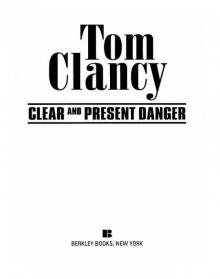 Clear and Present Danger
Clear and Present Danger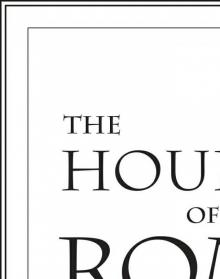 Hounds of Rome
Hounds of Rome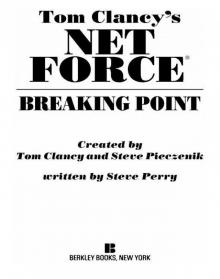 Breaking Point
Breaking Point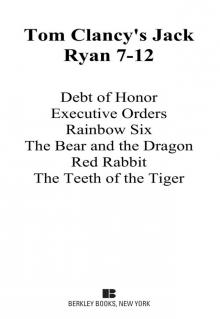 Tom Clancy's Jack Ryan Books 7-12
Tom Clancy's Jack Ryan Books 7-12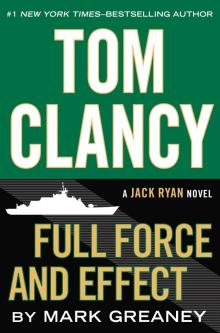 Full Force and Effect
Full Force and Effect The Archimedes Effect
The Archimedes Effect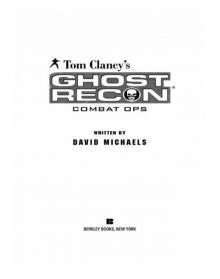 Combat Ops
Combat Ops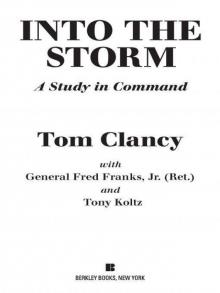 Into the Storm: On the Ground in Iraq
Into the Storm: On the Ground in Iraq Under Fire
Under Fire Point of Impact
Point of Impact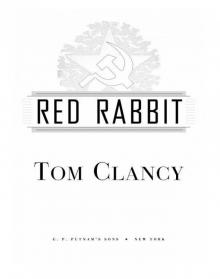 Red Rabbit
Red Rabbit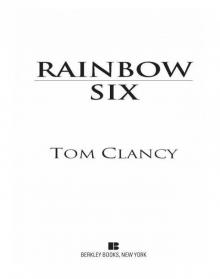 Rainbow Six
Rainbow Six The Hunt for Red October
The Hunt for Red October The Teeth of the Tiger
The Teeth of the Tiger Conviction (2009)
Conviction (2009)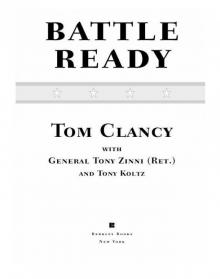 Battle Ready
Battle Ready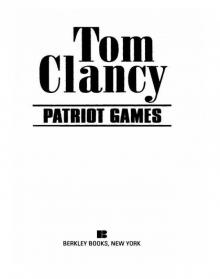 Patriot Games
Patriot Games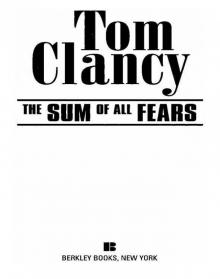 The Sum of All Fears
The Sum of All Fears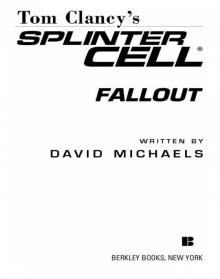 Fallout (2007)
Fallout (2007)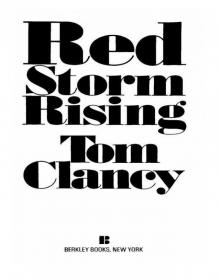 Red Storm Rising
Red Storm Rising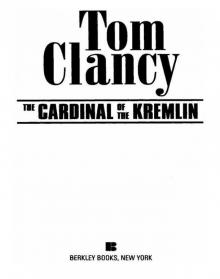 The Cardinal of the Kremlin
The Cardinal of the Kremlin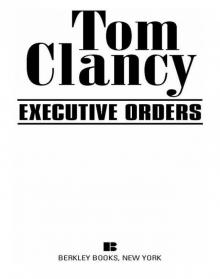 Executive Orders
Executive Orders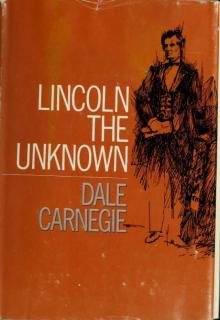 Lincoln, the unknown
Lincoln, the unknown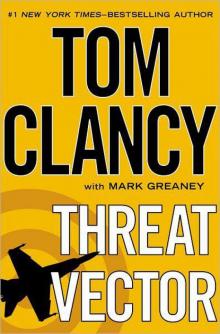 Threat Vector
Threat Vector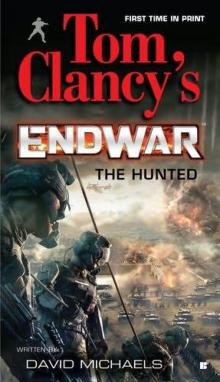 The Hunted
The Hunted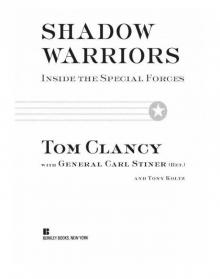 Shadow Warriors: Inside the Special Forces
Shadow Warriors: Inside the Special Forces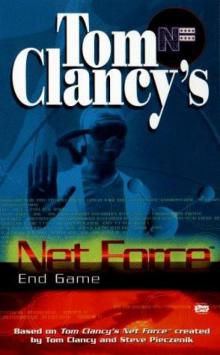 End Game
End Game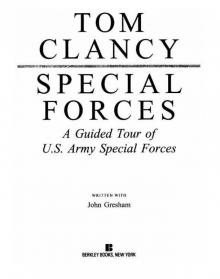 Special Forces: A Guided Tour of U.S. Army Special Forces
Special Forces: A Guided Tour of U.S. Army Special Forces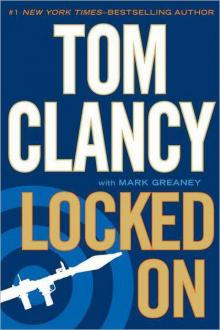 Locked On
Locked On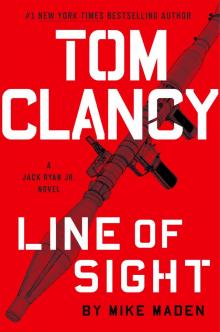 Line of Sight
Line of Sight Tom Clancy Enemy Contact - Mike Maden
Tom Clancy Enemy Contact - Mike Maden Fighter Wing: A Guided Tour of an Air Force Combat Wing
Fighter Wing: A Guided Tour of an Air Force Combat Wing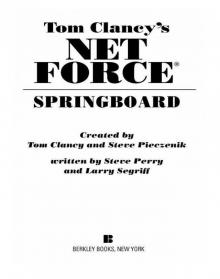 Springboard
Springboard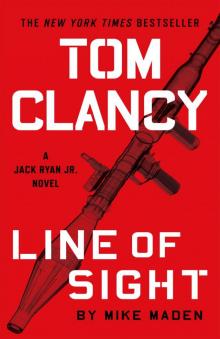 Line of Sight - Mike Maden
Line of Sight - Mike Maden EndWar
EndWar Dead or Alive
Dead or Alive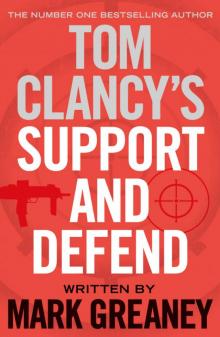 Tom Clancy Support and Defend
Tom Clancy Support and Defend Checkmate
Checkmate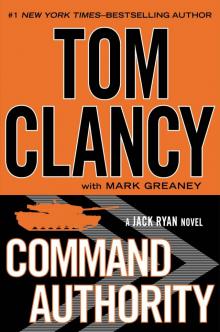 Command Authority
Command Authority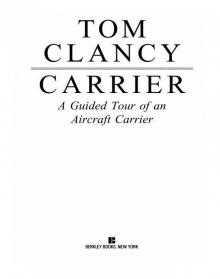 Carrier: A Guided Tour of an Aircraft Carrier
Carrier: A Guided Tour of an Aircraft Carrier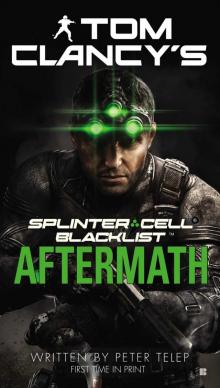 Blacklist Aftermath
Blacklist Aftermath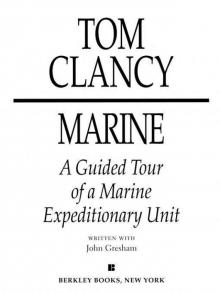 Marine: A Guided Tour of a Marine Expeditionary Unit
Marine: A Guided Tour of a Marine Expeditionary Unit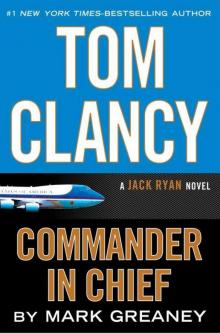 Commander-In-Chief
Commander-In-Chief Armored Cav: A Guided Tour of an Armored Cavalry Regiment
Armored Cav: A Guided Tour of an Armored Cavalry Regiment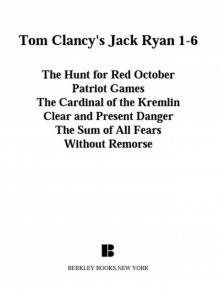 Tom Clancy's Jack Ryan Books 1-6
Tom Clancy's Jack Ryan Books 1-6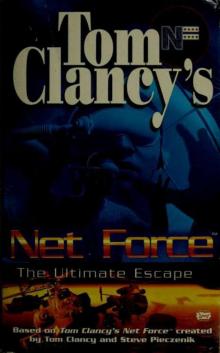 The Ultimate Escape
The Ultimate Escape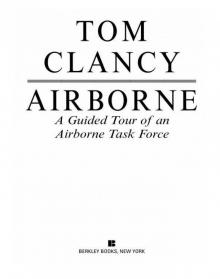 Airborne: A Guided Tour of an Airborne Task Force
Airborne: A Guided Tour of an Airborne Task Force Debt of Honor
Debt of Honor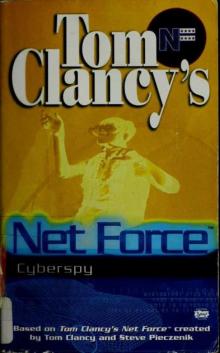 Cyberspy
Cyberspy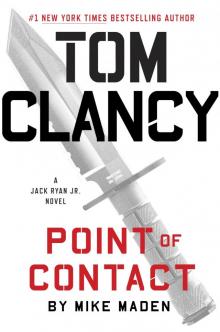 Point of Contact
Point of Contact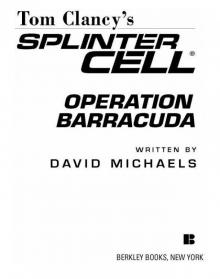 Operation Barracuda (2005)
Operation Barracuda (2005)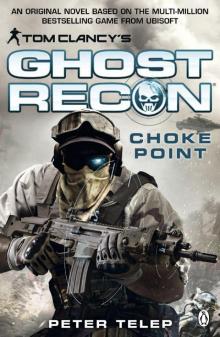 Choke Point
Choke Point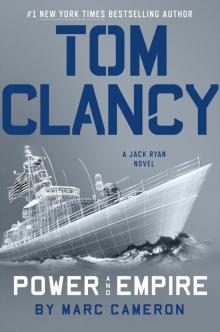 Power and Empire
Power and Empire Every Man a Tiger: The Gulf War Air Campaign
Every Man a Tiger: The Gulf War Air Campaign Endgame (1998)
Endgame (1998)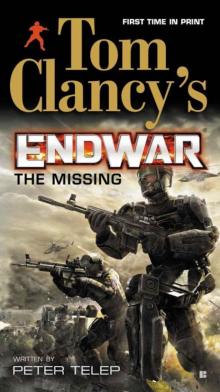 EndWar: The Missing
EndWar: The Missing Splinter Cell (2004)
Splinter Cell (2004)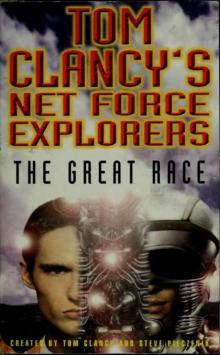 The Great Race
The Great Race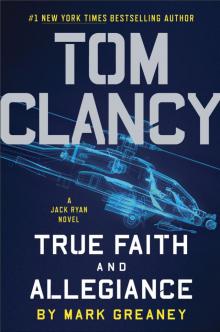 True Faith and Allegiance
True Faith and Allegiance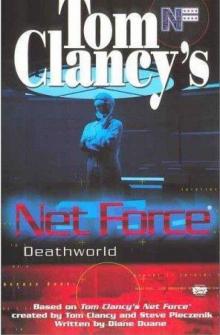 Deathworld
Deathworld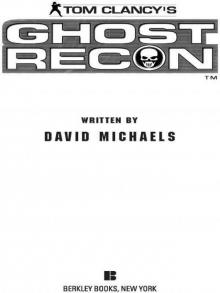 Ghost Recon (2008)
Ghost Recon (2008)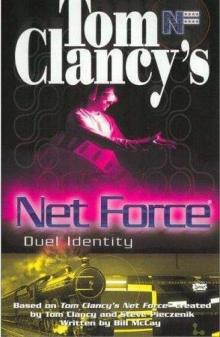 Duel Identity
Duel Identity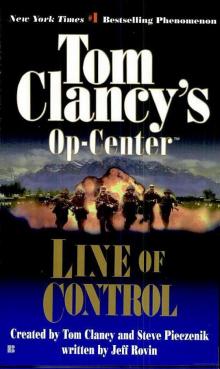 Line of Control o-8
Line of Control o-8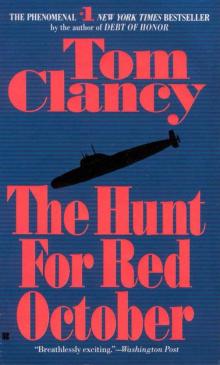 The Hunt for Red October jr-3
The Hunt for Red October jr-3 Hidden Agendas nf-2
Hidden Agendas nf-2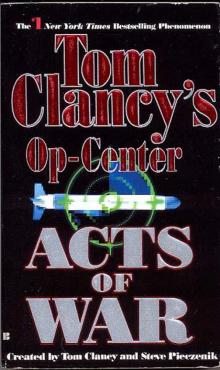 Acts of War oc-4
Acts of War oc-4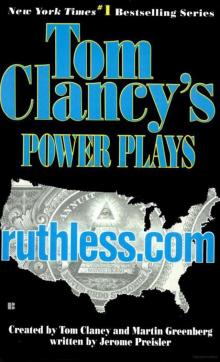 Ruthless.Com pp-2
Ruthless.Com pp-2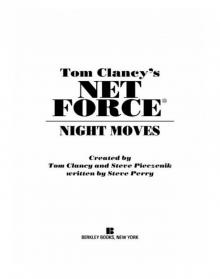 Night Moves
Night Moves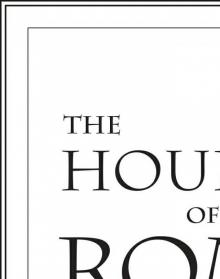 The Hounds of Rome - Mystery of a Fugitive Priest
The Hounds of Rome - Mystery of a Fugitive Priest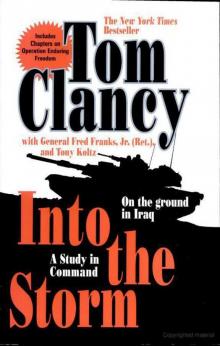 Into the Storm: On the Ground in Iraq sic-1
Into the Storm: On the Ground in Iraq sic-1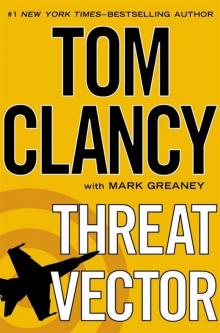 Threat Vector jrj-4
Threat Vector jrj-4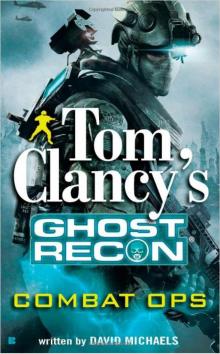 Combat Ops gr-2
Combat Ops gr-2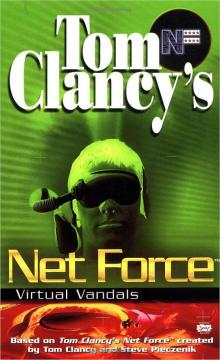 Virtual Vandals nfe-1
Virtual Vandals nfe-1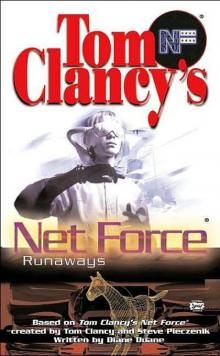 Runaways nfe-16
Runaways nfe-16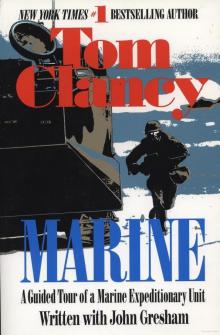 Marine: A Guided Tour of a Marine Expeditionary Unit tcml-4
Marine: A Guided Tour of a Marine Expeditionary Unit tcml-4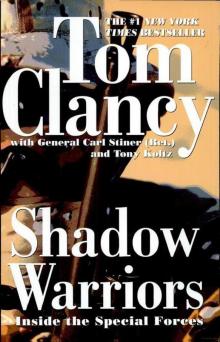 Shadow Warriors: Inside the Special Forces sic-3
Shadow Warriors: Inside the Special Forces sic-3 Jack Ryan Books 1-6
Jack Ryan Books 1-6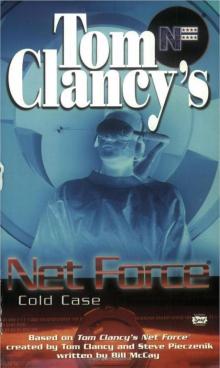 Cold Case nfe-15
Cold Case nfe-15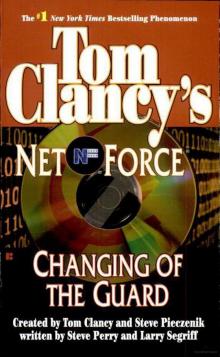 Changing of the Guard nf-8
Changing of the Guard nf-8 Splinter Cell sc-1
Splinter Cell sc-1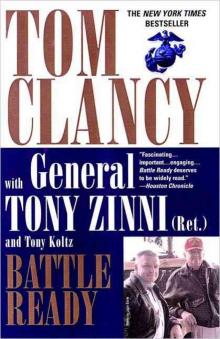 Battle Ready sic-4
Battle Ready sic-4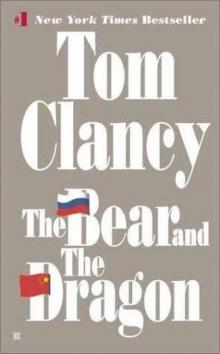 The Bear and the Dragon jrao-11
The Bear and the Dragon jrao-11 Fighter Wing: A Guided Tour of an Air Force Combat Wing tcml-3
Fighter Wing: A Guided Tour of an Air Force Combat Wing tcml-3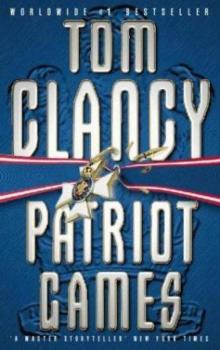 Patriot Games jr-1
Patriot Games jr-1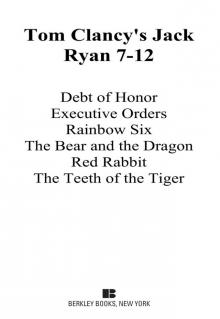 Jack Ryan Books 7-12
Jack Ryan Books 7-12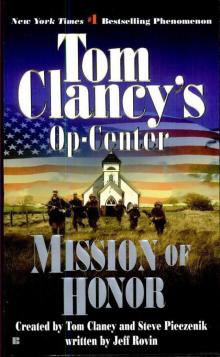 Mission of Honor o-9
Mission of Honor o-9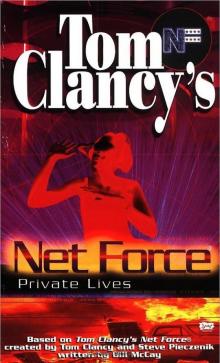 Private Lives nfe-9
Private Lives nfe-9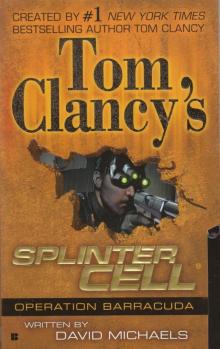 Operation Barracuda sc-2
Operation Barracuda sc-2 Cold War pp-5
Cold War pp-5 Point of Impact nf-5
Point of Impact nf-5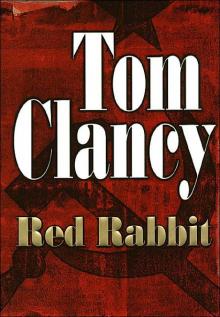 Red Rabbit jr-9
Red Rabbit jr-9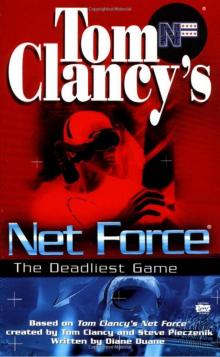 The Deadliest Game nfe-2
The Deadliest Game nfe-2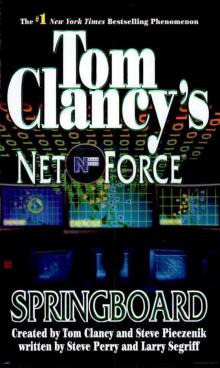 Springboard nf-9
Springboard nf-9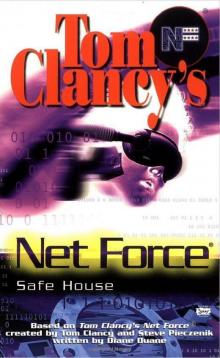 Safe House nfe-10
Safe House nfe-10 EndWar e-1
EndWar e-1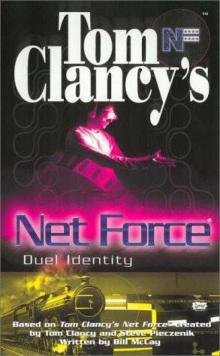 Duel Identity nfe-12
Duel Identity nfe-12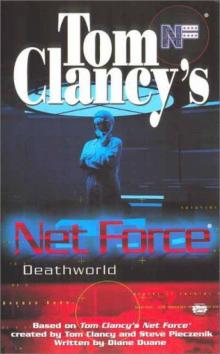 Deathworld nfe-13
Deathworld nfe-13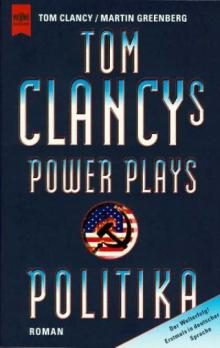 Politika pp-1
Politika pp-1 Rainbow Six jr-9
Rainbow Six jr-9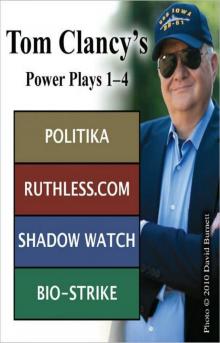 Tom Clancy's Power Plays 1 - 4
Tom Clancy's Power Plays 1 - 4 Endgame sc-6
Endgame sc-6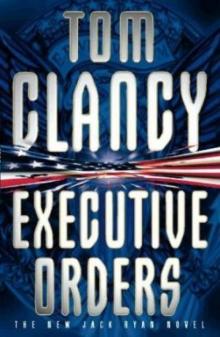 Executive Orders jr-7
Executive Orders jr-7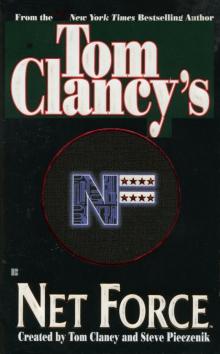 Net Force nf-1
Net Force nf-1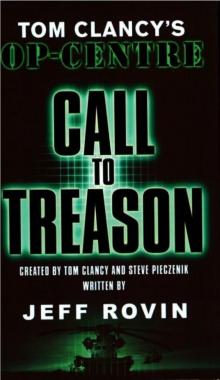 Call to Treason o-11
Call to Treason o-11 Locked On jrj-3
Locked On jrj-3 Against All Enemies
Against All Enemies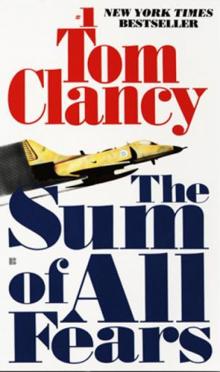 The Sum of All Fears jr-7
The Sum of All Fears jr-7 Sea of Fire o-10
Sea of Fire o-10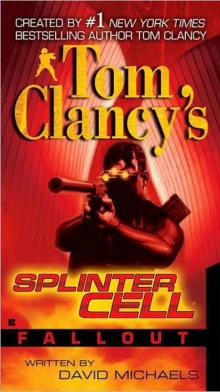 Fallout sc-4
Fallout sc-4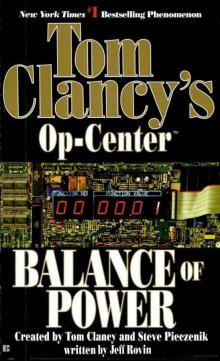 Balance of Power o-5
Balance of Power o-5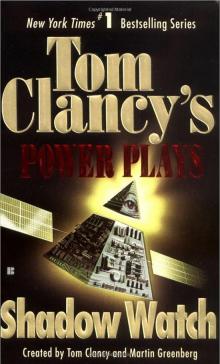 Shadow Watch pp-3
Shadow Watch pp-3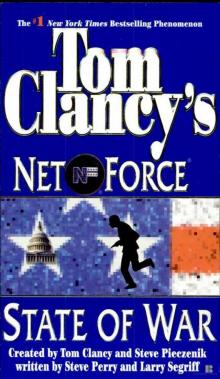 State of War nf-7
State of War nf-7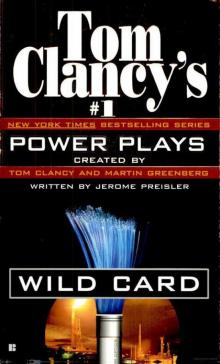 Wild Card pp-8
Wild Card pp-8 Games of State o-3
Games of State o-3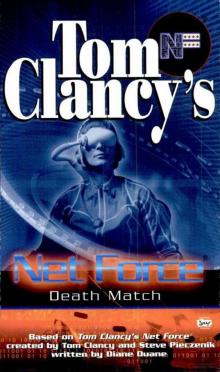 Death Match nfe-18
Death Match nfe-18 Against All Enemies mm-1
Against All Enemies mm-1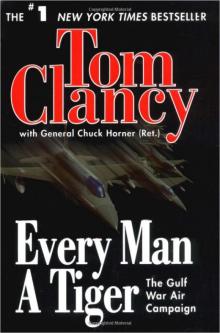 Every Man a Tiger: The Gulf War Air Campaign sic-2
Every Man a Tiger: The Gulf War Air Campaign sic-2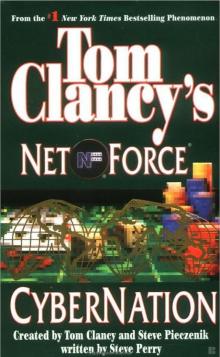 Cybernation nf-6
Cybernation nf-6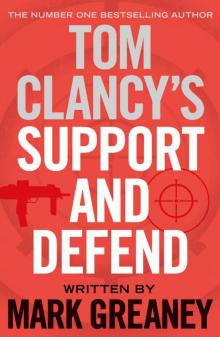 Support and Defend
Support and Defend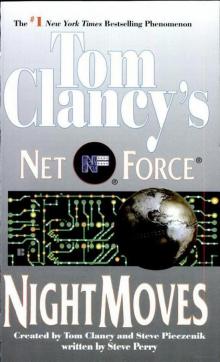 Night Moves nf-3
Night Moves nf-3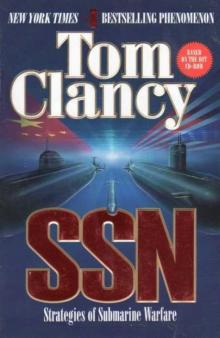 SSN
SSN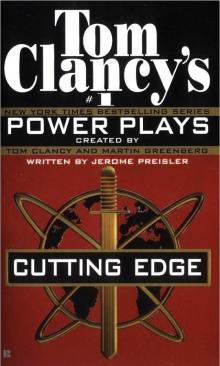 Cutting Edge pp-6
Cutting Edge pp-6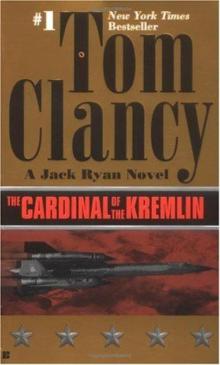 The Cardinal of the Kremlin jrao-5
The Cardinal of the Kremlin jrao-5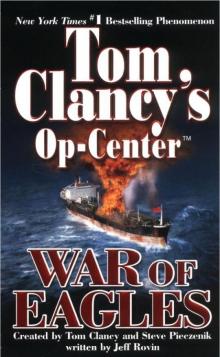 War of Eagles o-12
War of Eagles o-12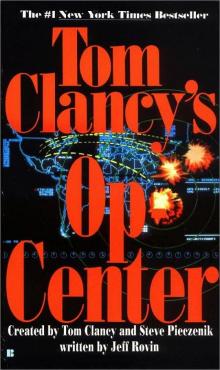 Op-Center o-1
Op-Center o-1 Mirror Image o-2
Mirror Image o-2 The Archimedes Effect nf-10
The Archimedes Effect nf-10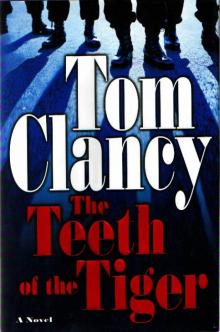 Teeth of the Tiger jrj-1
Teeth of the Tiger jrj-1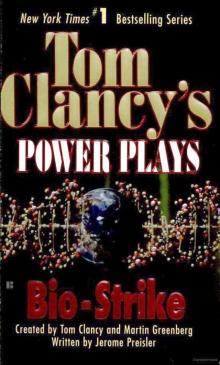 Bio-Strike pp-4
Bio-Strike pp-4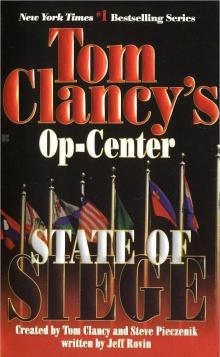 State of Siege o-6
State of Siege o-6 Debt of Honor jr-6
Debt of Honor jr-6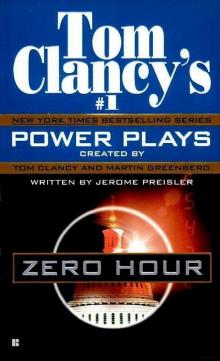 Zero Hour pp-7
Zero Hour pp-7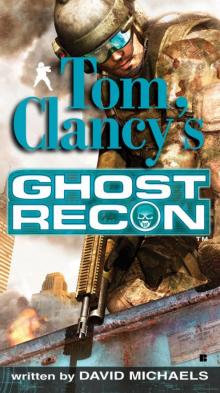 Ghost Recon gr-1
Ghost Recon gr-1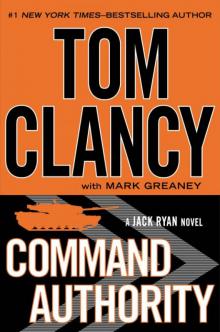 Command Authority jr-10
Command Authority jr-10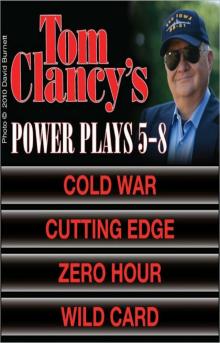 Tom Clancy's Power Plays 5 - 8
Tom Clancy's Power Plays 5 - 8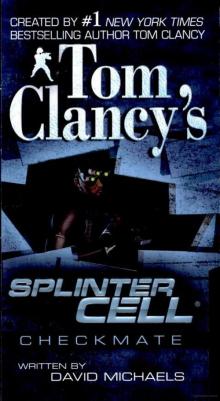 Checkmate sc-3
Checkmate sc-3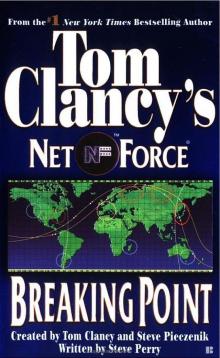 Breaking Point nf-4
Breaking Point nf-4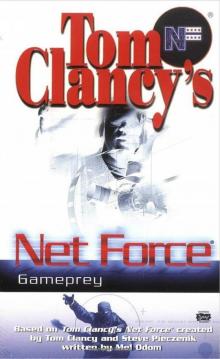 Gameprey nfe-11
Gameprey nfe-11 The Hunted e-2
The Hunted e-2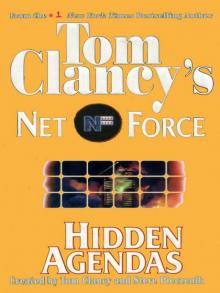 Hidden Agendas
Hidden Agendas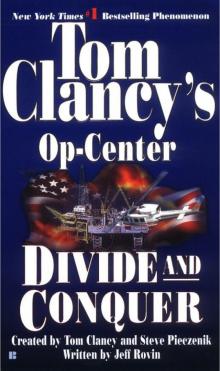 Divide and Conquer o-7
Divide and Conquer o-7